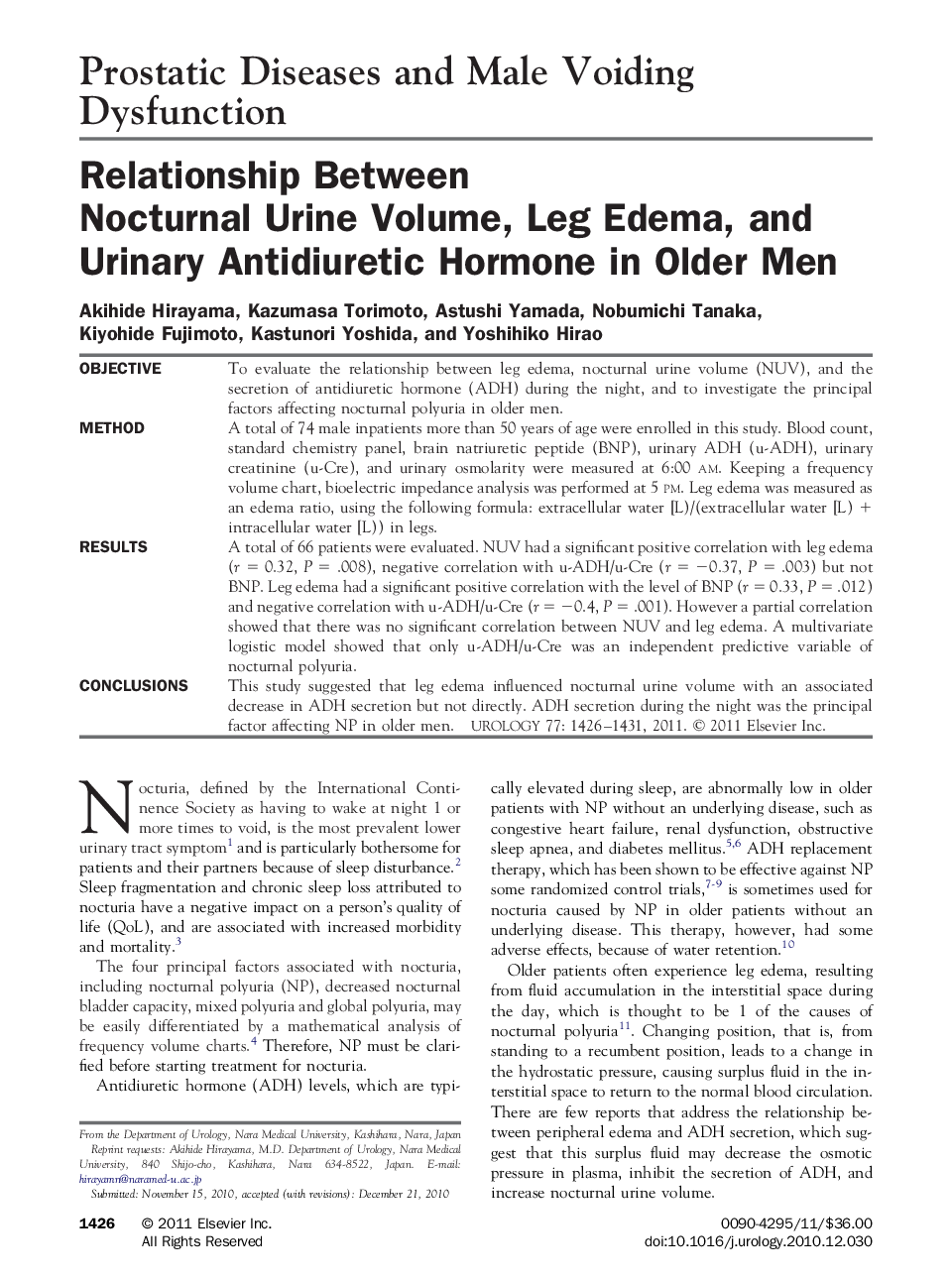| Article ID | Journal | Published Year | Pages | File Type |
|---|---|---|---|---|
| 3903417 | Urology | 2011 | 6 Pages |
ObjectiveTo evaluate the relationship between leg edema, nocturnal urine volume (NUV), and the secretion of antidiuretic hormone (ADH) during the night, and to investigate the principal factors affecting nocturnal polyuria in older men.MethodA total of 74 male inpatients more than 50 years of age were enrolled in this study. Blood count, standard chemistry panel, brain natriuretic peptide (BNP), urinary ADH (u-ADH), urinary creatinine (u-Cre), and urinary osmolarity were measured at 6:00 am. Keeping a frequency volume chart, bioelectric impedance analysis was performed at 5 pm. Leg edema was measured as an edema ratio, using the following formula: extracellular water [L)/(extracellular water [L) + intracellular water [L)) in legs.ResultsA total of 66 patients were evaluated. NUV had a significant positive correlation with leg edema (r = 0.32, P = .008), negative correlation with u-ADH/u-Cre (r = −0.37, P = .003) but not BNP. Leg edema had a significant positive correlation with the level of BNP (r = 0.33, P = .012) and negative correlation with u-ADH/u-Cre (r = −0.4, P = .001). However a partial correlation showed that there was no significant correlation between NUV and leg edema. A multivariate logistic model showed that only u-ADH/u-Cre was an independent predictive variable of nocturnal polyuria.ConclusionsThis study suggested that leg edema influenced nocturnal urine volume with an associated decrease in ADH secretion but not directly. ADH secretion during the night was the principal factor affecting NP in older men.
